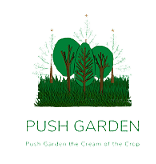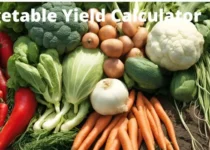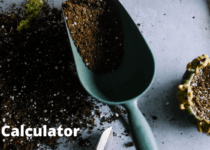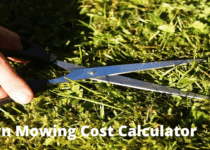Plant Population Calculator
Plant population refers to the number of individual plants growing within a defined area. It’s a key concept in agriculture, horticulture, and forestry as it directly influences:
- Yield: The number of plants in an area directly relates to the potential yield (harvest) from that area. Optimal plant population often maximizes yield for a given crop and environment.
- Resource Use: Proper plant population helps ensure plants make efficient use of resources like sunlight, water, and nutrients. Overcrowding can lead to competition and reduced yields while under-planting wastes resources.
- Plant Health: Correct spacing allows for better airflow, reducing the risk of diseases spreading. It also provides enough space for plants to grow to their full potential without being stunted.
- Management Practices: Knowing the plant population helps in determining the amount of seed, fertilizer, pesticides, or other inputs needed.
How Plant Population is Expressed:
Plant population is typically expressed in one of the following ways:
- Plants per Unit Area: This is the most common method, stating the number of plants per square foot, square meter, acre, hectare, etc. For example, “10,000 plants per acre” or “5 plants per square meter.”
- Spacing Between Plants: This describes the arrangement of plants. For example, “rows spaced 3 feet apart with plants 1 foot apart within rows.”
Factors Affecting Optimal Plant Population:
The ideal plant population varies greatly depending on several factors:
- Plant Species or Variety: Different plants have different growth habits and space requirements.
- Environmental Conditions: Soil type, climate, sunlight, and water availability all play a role.
- Production Goals: Desired yield, quality considerations, and management practices influence population decisions.
- Planting Date and Method: Early planting or transplanting may allow for higher densities.
Calculating Plant Population:
You can estimate plant population using spacing measurements or use online calculators (like the one we discussed earlier) to help you determine the appropriate numbers for your specific situation.
Remember: Finding the optimal plant population is crucial for maximizing yield and ensuring healthy plant growth.
Here’s a step-by-step guide on how to use a plant population calculator, along with explanations of the inputs and concepts:
Understanding the Inputs
- Area Unit: This refers to the unit of measurement for the total area you want to plant. Common options are:
- Acres: Typically used for larger fields.
- Hectares: Another unit for large areas, often used internationally.
- Total Area: The overall size of the land where you’re planting.
- Distance Unit: The unit of measurement for spacing.
- Inches: Commonly used in gardens or smaller fields.
- Centimeters: A metric unit often used in agriculture.
- Row Spacing: The distance between the centers of two adjacent rows of plants.
- Plant Spacing (In-Row Spacing): The distance between the centers of two adjacent plants within the same row.
Steps to Use the Calculator
- Access a Calculator: Find a plant population calculator online (search for “plant population calculator”) or use a physical calculator with this functionality.
- Select Area Unit: Choose the unit that matches your measurement for the total area (acres or hectares).
- Enter Total Area: Type in the numerical value of the total area.
- Select Distance Unit: Choose the unit you’ll be using for row spacing and plant spacing (inches or centimeters).
- Enter Row Spacing: Input the distance between rows, using the selected unit.
- Enter Plant Spacing: Input the distance between plants within a row, using the selected unit.
- Calculate: Click the “Calculate” button or equivalent.
- Interpret the Result: The calculator will display the estimated plant population. This number represents how many plants you can theoretically fit in the given area with the specified spacing.
Important Considerations
- Accuracy: Ensure accurate measurements for all inputs, as even small errors can significantly impact the result.
- Irregular Shapes: If your planting area is not a perfect rectangle or square, divide it into smaller, more manageable shapes and calculate the population for each section separately. Then, add those populations together.
- Practical Adjustments: The calculated plant population is an estimate. You may need to adjust it based on:
- Plant Type: Different plants have different space requirements.
- Growth Habit: Consider whether plants will spread out or grow tall.
- Field Conditions: Account for any obstacles, slopes, or uneven terrain.
- Seedling Loss: Factor in potential losses due to factors like pests, diseases, or transplanting shock.
Example
Let’s say you have a 1/2 acre field and want to plant tomatoes. You plan to space rows 3 feet (36 inches) apart and plants 18 inches apart within rows.
- Area Unit: Acres
- Total Area: 0.5
- Distance Unit: Inches
- Row Spacing: 36
- Plant Spacing: 18
After entering these values into a calculator, the result might show an estimated plant population of around 3,630 plants.



